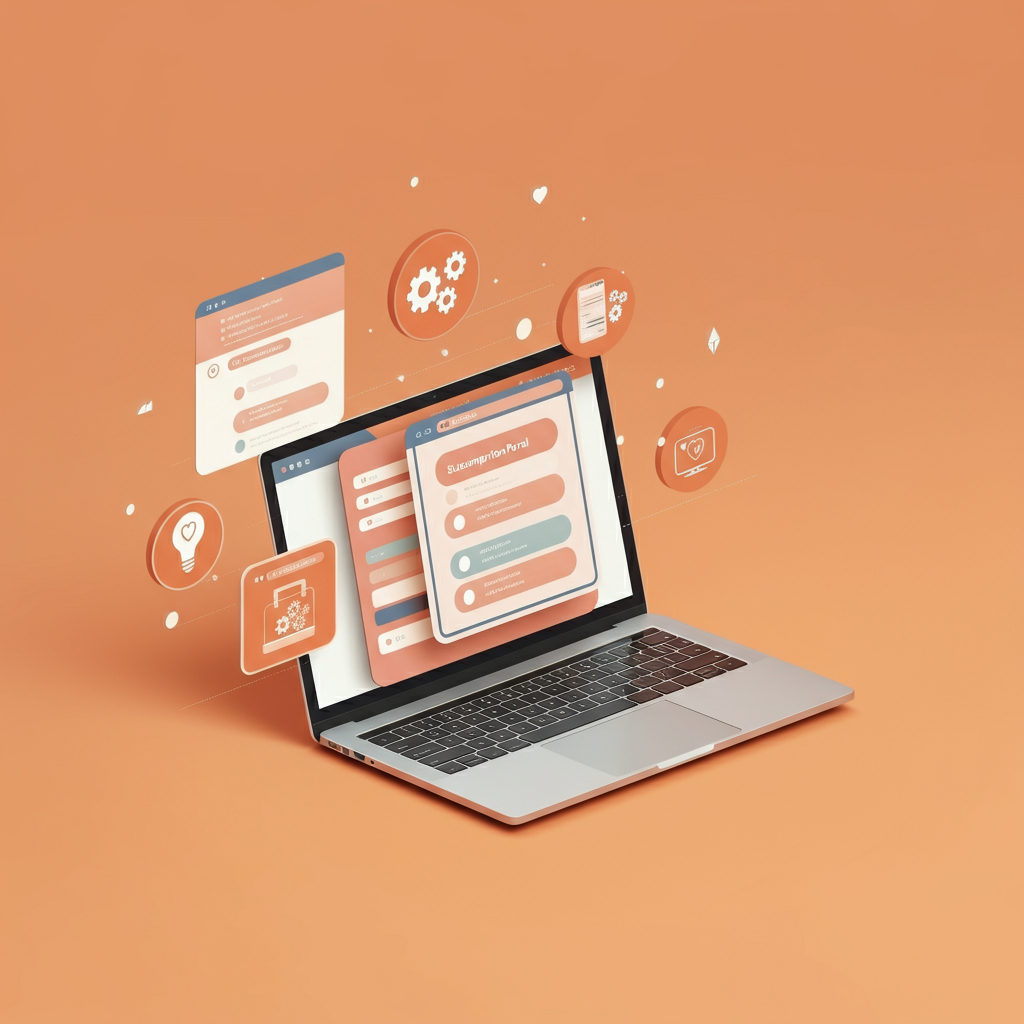Share
You’ve synced orders, automated emails, and connected your store to HubSpot. On paper, your HubSpot ecommerce integration looks complete. But if customers can’t self-serve, support tickets keep piling up, and your team is still drowning in manual requests - something’s missing.
This blog explains why HubSpot ecommerce integrations alone aren’t enough - and why a customer portal strategy may be the system glue you didn’t know you needed.
Why Most HubSpot Ecommerce Integrations Fail Without a Customer Portal Strategy
What Most People Think "Integration" Means
Too often, HubSpot ecommerce integrations are seen as “done” once order data syncs or email workflows fire. But if there’s no front-end layer for customers to interact with—your integration is incomplete.
For example, syncing ecommerce orders with HubSpot’s CRM, setting up post-purchase automations, and having order data flow into customer contact records are often seen as sufficient goals. On paper, this sounds like a complete solution. Yet, while these elements are foundational, they only scratch the surface of what true ecommerce integration entails.
Integration in its most basic form prioritizes backend functionality, but it neglects the customer's experience.
This limited view of integration often results in disconnected workflows, bottlenecks in the post-purchase process, and an inability to fully leverage the systems in place. True integration is about much more than moving data - it’s about creating a cohesive, seamless experience for both your internal teams and, most importantly, your customers.
Where Most HubSpot Ecommerce Integrations Fall Short
Even when businesses invest significant resources into a technically correct HubSpot ecommerce integration, two glaring issues often emerge.
First is the lack of customer visibility - no centralized customer login or portal where users can easily access order history, manage subscriptions, or interact with support. This causes frustration for customers who expect convenience and autonomy.
Second, these integrations often fail to create a branded, seamless experience. Instead of unifying various touchpoints into a cohesive flow, customers and employees face fragmented systems that complicate processes like handling returns, modifying orders, or troubleshooting issues.
Additionally, support teams often continue to face an overwhelming volume of manual requests due to the absence of self-serve solutions. This not only increases operational strain but also diminishes customer satisfaction. The fragmented data resulting from incomplete integrations further compounds these issues, leading to poor segmentation, ineffective automation logic, and lost opportunities to deepen customer relationships.
Why a Portal Strategy Fills the Gap
A customer portal strategy is the difference between a working HubSpot ecommerce integration and one that drives real business value. By giving users access to dedicated, account-based portals, businesses can empower customers to self-serve key functions such as order tracking, subscription management, support ticket submissions, and even digital downloads. This reduces the workload on support teams and fosters long-term customer loyalty.
For your teams, portals deliver better lifecycle visibility, making it easier to anticipate customer needs and tailor communications appropriately. Data is no longer locked in isolated siloes-instead, it flows across all departments, enabling smarter automations and strategies. Integrating customer portals into your ecommerce setup turns a basic backend sync into a fully immersive, branded experience that drives retention and satisfaction.
Customer Portal Use Cases That Fix Your HubSpot Ecommerce Integration
-
Account-Based Portals for Wholesale Customers
-
Wholesale clients can log in to view pricing tiers, discounts, and order histories, ensuring their unique needs are met while streamlining your B2B processes.
-
-
Subscription Management Portals
- Customers managing their subscriptions-whether updating payment methods or opting into new plans-can do so independently, reducing churn risk and manual intervention.
- Customers managing their subscriptions-whether updating payment methods or opting into new plans-can do so independently, reducing churn risk and manual intervention.
-
Support and Returns Portals
- Centralizing support submissions and return requests through a portal eliminates friction while providing customers with clear, real-time updates.
- Centralizing support submissions and return requests through a portal eliminates friction while providing customers with clear, real-time updates.
-
Digital Product Download Access
- Offering customers secure, on-demand access to digital products or files amplifies user satisfaction and reduces unnecessary support interactions.
Why Engaging Partners Builds CRM-First Ecommerce Systems
At Engaging Partners, we don’t just implement HubSpot ecommerce integrations. We design complete CRM-powered commerce ecosystems built to scale.
To unlock the full potential of HubSpot ecommerce integrations, collaborating with experienced partners is essential. True experts focus on more than just implementation - they design solutions with lifecycle automation at the forefront. This ensures that every aspect of your ecommerce ecosystem, from sales to post-purchase support, contributes to a unified customer experience.
With a proven track record of merging ecommerce, support, and service workflows, such partners craft strategies designed to meet your long-term goals. By shifting the focus from technology to outcomes, your integrations become more than functional - they become transformational.
Most HubSpot ecommerce integrations stop at syncing data. We help you go further—designing customer portals, lifecycle automation, and post-purchase journeys that drive retention and revenue.

-1.jpg)

.png?width=352&name=Generated%20image%20(2).png)



-1.png?width=352&name=Generated%20image%20(1)-1.png)



